VESTA’s Enology Program Makes it Real
I had reached the moment of truth in VIN146, the Introduction to Enology course that forms part of the VESTA wine education program: it was time to bottle my homemade wine.
Until now, the weeks spent dabbling with wine juice, chemicals from bentonite to sulfite, daily temperature monitoring and Brix readings had all seemed like innocent fun. It reminded me of being a little boy again when I made special mixtures of dirt that I imagined using to blow up the ugly block of flats next door.
But as the wine surged through a tube from the fermentation bucket into bottle after bottle, the reality of what had been achieved during this one semester course hit home. I had made wine and was actually going to be drinking the stuff — and with thirty bottles to be filled, quite a lot of it, although, some juice missed the bottles and ended up a mess on the basement floor.
The focus of this VESTA course was a weekly lecture, delivered live on Tuesday evenings by our teacher, John Giannini, a winemaker and winery consultant with twenty years of experience.
‘My hope is that students acquire a basic understanding of the winemaking process after successfully completing Introduction to Enology,” said Giannini. ‘I want students to have a solid foundation if they decide to continue in the VESTA program.”
You listened to lectures from the comfort of your home via computer. On one side of your computer screen you could see the names of twenty fellow students, from a range of backgrounds including universities, wineries and some just curious wine enthusiasts like me. The software allowed you to follow a slide show that accompanied the lecture and also ask questions using your computer’s microphone. However there was no live video stream, which, while granting pleasing anonymity, can be a weakness of online courses.
‘It is much easier to gauge the class understanding of material being taught when you can see students’ faces,” conceded Giannini. ‘In a conventional classroom setting I can more easily identify students who may be struggling with the material and offer them extra help outside the classroom. During an online class I may see a student’s name on the list, but there is no way to know that they are sitting at their computer. I know students are in class and paying attention when they ask questions or respond when I ask for questions.”
During our course, about ten of the twenty students asked one or more questions — the rest remained silent for the entire semester. The thought did occur to me that I could switch my computer on and log-on as though present and instead desert my post to make the dinner (sure Danny) or change my son’s diaper (for once). I didn’t. My only sin was occasionally sitting down to the lecture with a glass of wine.
Like any other online program with a live lecture component, the VESTA course took a bit of getting used to. There were a few technical tricks to learn for new students: logging in, passwords, downloading the lecture software and identifying which buttons to press to enable participation during the lecture. For the first weeks some students, including me, would stumble to press the right buttons to control the microphone, creating awkward and amusing extended seconds of silence when lecturer John would sound like Houston trying to communicate with the space shuttle. But once accustomed to it, this online lecturing system worked very well. The absence of video wasn’t an issue for me — I liked the technical simplicity and the anonymity of it. To ensure my mind didn’t wander, I took lecture notes.
Apart from the weekly lecture, there are two other main components of the course. The first is making wine with a wine kit and keeping a detailed wine journal of that experience. The second is eight hours at a local winery shadowing the winemaker through as many parts of the winemaking process as possible.
It’s up to the student to gather the wine kit equipment and also connect with a local winery. I chose Holy-Field Winery in Basehor, Kansas and found co-owner and winemaker Michelle Meyer a very friendly and interested mentor. I visited Holy-Field to harvest Norton grapes and then watch their crushing and destemming. A few days later, I returned to watch the pressing. Then, some weeks afterwards, I observed the bottling of Vignoles.
VIN146 cost just over $400 to take but there are some added expenses that students need to be aware of. Buying a wine kit, including the equipment and the juice, can set you back about $250.
Another expense is mailing a bottle of your homemade wine to the teacher for evaluation, about $40 via UPS. Some students from more alcohol unfriendly states, had trouble getting their wine shipped. That was one part of the process that VESTA could probably smooth a bit, and even work out a deal with a shipper. But that was a minor issue, and luckily for me, one I didn’t have.
Over fifteen weeks we covered a maelstrom of enological topics including wine composition, juice and wine analysis, cleaning and sanitation, fermentation, wine clarification and stabilization and of course, bottling.
The theoretical side of the course was a real eye opener for me — John Giannini had lots of valuable winemaking insights to offer from his own personal experience. For example, he explained how to set up trial samples using egg whites to reduce the overly tannic flavor of some reds. He was also good at speaking clearly and logically, as well as asking us all if we understood what he’d just said — important when you can’t see your students.
Students would chip in with valuable information too, like Lura, who recommended buying swimming pool pumps instead of purpose built winery pumps, to save money when establishing a winery. There was also a discussion board where, each week, we were required to post a question and answer two from other students.
This duality of the course — the online world of shared time with the lecturer and other students, and then the real world of private wine kit and winery activities, lent VIN146 a Tron-like feel. I mean the movie Tron, where there’s another world of electronic cities and people behind the interface of a video game and a departure point where the protagonist ‘enters’ the computer to discover the reality of it all.
By taking knowledge from the online lecture and applying it in my basement with a wine kit, or observing it in practice at Holy-Field Winery, my Tron-like wine lecture experience became a reality.
Thanks to this VESTA course, my interest in wine has also become more real. New worlds that I knew very little about have opened to me: the chemistry of wine and the craft behind winemaking.
My one regret: that we couldn’t all share a glass of wine at the end.

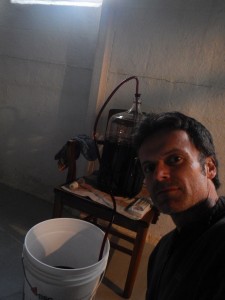
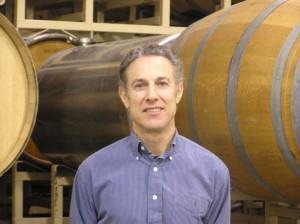
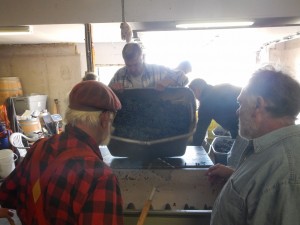
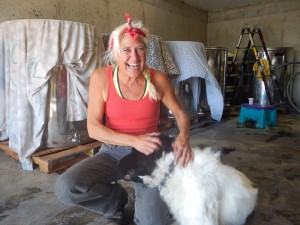

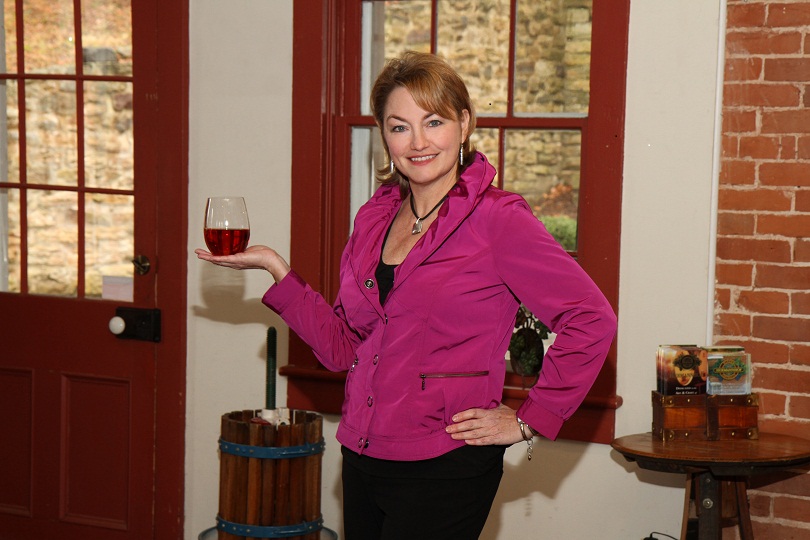


Nicely written Danny…congratulations! my name is Abe and I have been with VESTA for the last 2 years..hopefully I’ll be getting my AA in Enology this Spring 2015. My field of concentration is making tropical fruit wines as I came from the “Pearl of the Orient Seas” – the Philippines. Prior to VESTA, I’ve been joining the WineMaker International Amateur Wine Competition and have never seen how a wine medal looks. After 1year into VESTA including VIN 146 under Mr. Pat Henderson, VIN 147 – Dennis Drummond, VIN 246 – Hilary Sjolund and a few other subjects and tough instructors, I finally made it to the GOLD in 2013 and BRONZE in 2014….VESTA INDEED MAKES A DIFFERENCE !!!
Hi Abe, thanks for the plug about our classes! Proud that you won that Gold and keep up the good work!
Cheers’
Dennis, fruit wine instructor
Hi Dennis…..I saw this article and your reply, when searching for answers to one of your projects! Just saying Hi!
I’m looking forward to working with VESTA at Monroe County Community College.